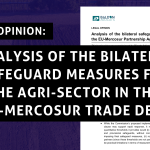LETTER
RE: NGO comments on TEN-E discussion in COREPER I (Wednesday 2 June)
Dear Deputy Ambassador X,
Tomorrow you will discuss the Portuguese Presidency’s proposed General Approach on the TEN-E regulation with your counterparts in COREPER I.
We the undersigned civil society organisations (Bellona, CAN Europe, CEE Bankwatch, ClientEarth, E3G, Ecologistas en Acción, EKOenergy ecolabel, Food and Water Action Europe, Friends of the Earth Europe, Global Witness and Greenpeace) are alarmed at the prospect of the Council adopting a position that would not be in line with the EU’s climate and energy objectives nor with the European Green Deal.
In particular, the current proposed General Approach should be amended as follows:
- No projects that facilitate the blending of fossil gas with hydrogen should be eligible for Project of Common Interest status (PCI).
- No exemptions should be made for the oversized EastMed and Melita fossil gas pipelines that would be in operation well beyond 2050.
- The gas industry should be removed from its central role in the energy project selection process.
If significant improvements cannot be made to the latest proposal, we urge you to delay the agreement of the Council’s General Approach.
Below are some important messages we would like to share with you:
1. Gas grid upgrades to facilitate blending should not be eligible
The latest draft Presidency text extends the transitional period for blending fossil gas with hydrogen from 2025 to 2030 (Article 24).
All scenarios show that renewables based hydrogen will remain a scarce resource. Hydrogen is most valuable when used in a targeted manner in sectors that cannot be decarbonised through direct electrification, such as chemicals or steel manufacturing. These very industries have warned about the negative impacts that blending may have on their activities. Moreover, the blending of hydrogen with fossil gas would bring very limited climate benefits. For example, blending a 5% volume of hydrogen would only displace 1.6% of fossil gas demand, resulting in negligible carbon savings.
Blending would increase costs for non-industrial gas customers. The cost of upgrading gas infrastructure to facilitate blending is very expensive and if this were to fall on all gas customers, it would increase all gas bills. Added to this, customers would be paying for hydrogen, which will remain more expensive than fossil gas for some time. This would create a mismatch between who benefits from blending and who pays for it.
In addition, blending serves to reinforce the existing gas infrastructure network and would preempt a strategic conversation about how to optimise the hydrogen network, based on centres of demand and sources. Indeed, an optimal design could reduce the costs of a future hydrogen network by up to 60%. Indiscriminate blending would waste this opportunity and lead to investments in assets that would otherwise be underutilised and be better suited to decommissioning.
Finally, most of the project promoters claim aiming for “hydrogen-ready” infrastructure projects which would make the approval of blending a dangerous – and expensive – gateway for modernization and lifetime extension of traditional fossil gas infrastructure under the pretext of adaptation for alternative gases. The current Presidency text does not contain a definition of “renewable” and “low carbon” gasses, allowing significant opportunity for investment in infrastructure to transport gases with fossil carbon content and/or with high upstream production emissions, with insignificant or even detrimental contribution to emission reduction. At the same time, according to the gas trade body ENTSO-G, potential PCIs under the current TEN-E with approval or active support by member states would cost over €30 billion and cost nearly €12 billion over 15 years to operate.
Over the past eight years, the EU has wasted nearly €440 million on gas projects that either have not been built or are likely to fail. With new PCIs costing a possible €42 billion – seven times the funds set aside for all Connecting Europe Facility grants – the EU risks supporting future stranded fossil gas assets costing billions in public and private funds.
2. The EastMed and Melita pipelines should not receive derogations
The current proposal allows for the construction of two new fossil gas pipelines EastMed and Melita (Article 25).
The EastMed pipeline would provide a new source of gas from offshore Israel to Cyprus, Greece and elsewhere in the EU – gas Europe cannot use. With a proposed capacity of 20 billion cubic meters (bcm) of gas per year, the pipeline would lock Europe into gas use for decades. If operating at full capacity, gas carried by EastMed would emit as much carbon annually as Europe’s current worst polluter, the Bełchatów coal-fired power plant in Poland. And by 2050, if the EU is meeting its climate targets, the pipeline could supply nearly half of the fossil gas that Europe would be in a position to consume. Such projects would also encourage further development of fossil resources when it is widely recognised, including by the IEA, that countries cannot develop more oil or gas if we are to keep global temperature rise to 1.5°C.
Recent reporting also shows that EastMed is a risky investment as tensions between Greece, Cyprus and Turkey – already high over possible offshore gas reserves – could be further inflamed by the pipeline. The project also relies upon the Anglo-Israeli gas company Energean, which to date is EastMed’s only committed supplier. Evidence shows that Energean’s founders were linked to a banking scheme that allegedly helped crash the Cypriot economy in 2013, leading to an EU bailout that cost taxpayers billions. More information on Energean, including the founders’ denials that they did anything wrong, can be found at globalwitness.org.
The Melita pipeline, which would transport gas from Sicily to Malta, also poses a threat to EU efforts to rapidly wean itself off gas. Malta only recently added gas to its energy mix, leaving an opportunity for the country to move towards renewable energy. Melita would waste this opportunity, pumping up to 2 bcm of gas into a country with a population of 500,000. By comparison, in 2019 Finland – with a population ten times that of Malta – consumed 2 bcm of gas.
Both the EastMed and Melita pipelines would represent a dangerous channelling of public and private money into the fossil fuel sector, while energy efficiency and renewables stay underfunded. ENTSO-G data suggests that constructing and operating these pipelines for 30 years would cost over €7 billion: nearly €6.6 billion for EastMed and €450 million for Melita, not to mention a high gas import bill.
3. The governance system must be fundamentally changed.
The Council’s current draft also repeats mistakes made in the Commission’s proposal by failing to end the system that gifts undue influence to fossil gas transport companies, operating through ENTSO-G. The Council’s proposal would continue to grant ENTSO-G responsibility over determining the EU’s gas infrastructure needs and selecting PCIs.
Research shows that this conflict of interest results in bad data and billions going to ENTSO-G member companies. Since 2013, ENTSO-G has repeatedly overestimated Europe’s gas consumption needs. Gas demand has peaked and is declining (compared to 2010) in a majority of EU member states except for Bulgaria, Greece, Poland and Portugal. At the same time, over 80 percent of EU subsidies given to gas PCIs have gone to projects backed by ENTSO-G member companies. This raises concerns about the PCI list serving the gas transport industry (ENTSO-G members) instead of developing energy infrastructure that is in all Europeans’ interest.
In 2020, Europe’s energy regulators, through ACER and CEER, concluded that “(m)ost of the problems that arose during the past implementation of the Regulation could be ascribed to the regulatory role inappropriately attributed to the ENTSOs, despite their conflict of interest”. In May of this year, ACER went further, stating that the new TEN-E Regulation should focus on “strengthening the independent assessment of projects and the regulatory oversight of network operators”.
Resetting the way infrastructure decisions are taken is the precondition to get this revision right. Despite this, the Council’s proposal offers only small governance improvements through additional oversight by Member States. It does not tackle the fundamental conflict of interest created by leaving ENTSO-G in charge of developing the scenarios that underpin the selection of projects and responsible for developing the methodology for the cost-benefit analysis used to help choose projects. It does not fill the expertise gap in the current process, which involves only supply-side stakeholders and does not represent future challenges related to an increasingly decentralised, interconnected and digitalised energy system.
With the proposed governance system, the TEN-E regulation will continue to suffer from a lack of independent and holistic expertise, and decisions will continue prioritising the narrow interests of the gas industry. The recently established European Scientific Advisory Board on Climate Change (as defined in the European Climate Law) should be mandated to oversee the process and provide independent monitoring of the decision making. The Council should remove ENTSO-G from its central role in this process and create a governance system that is genuinely independent, science-based, and fit for driving the energy transition.
With best wishes,
Tara Connolly
Sent on behalf of Bellona, CAN Europe, CEE Bankwatch, ClientEarth, E3G, Ecologistas en Acción, EKOenergy ecolabel, Food and Water Action Europe, Friends of the Earth Europe, Global Witness and Greenpeace.



